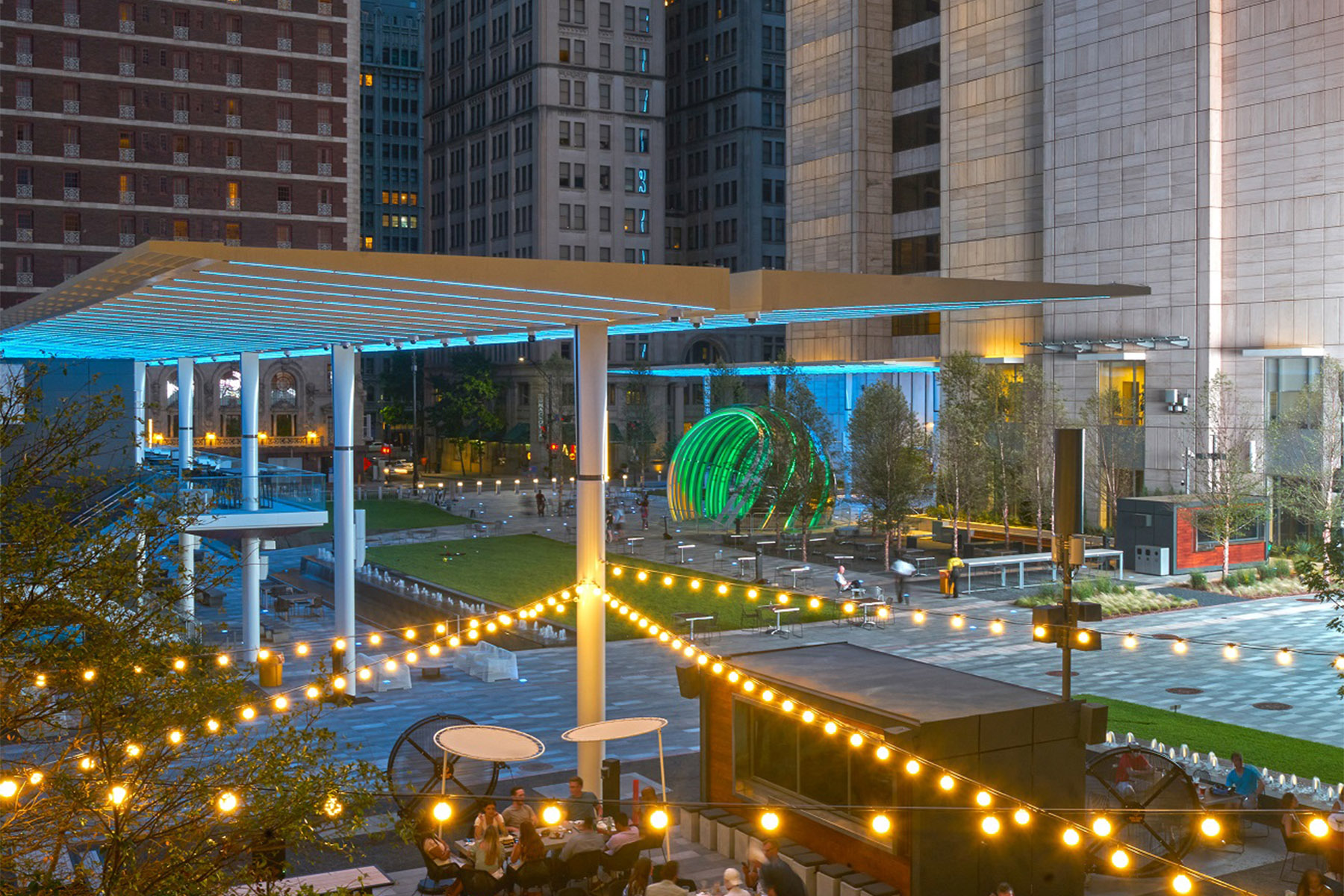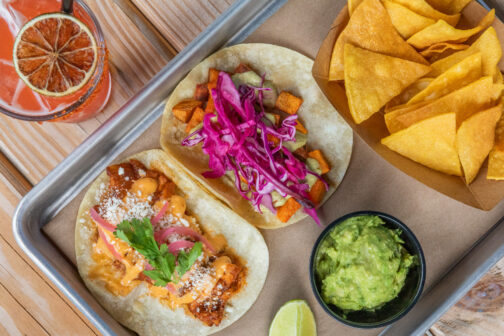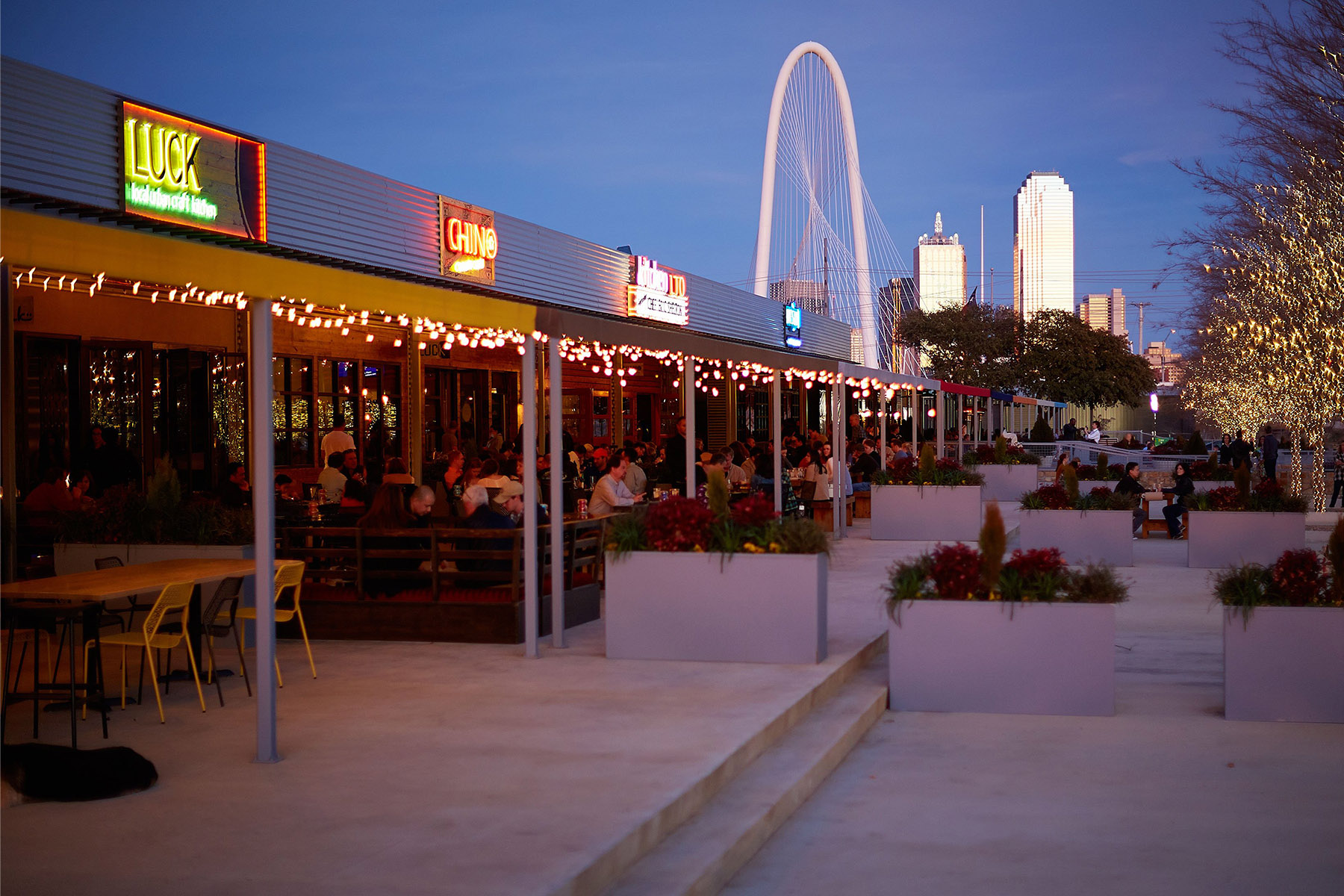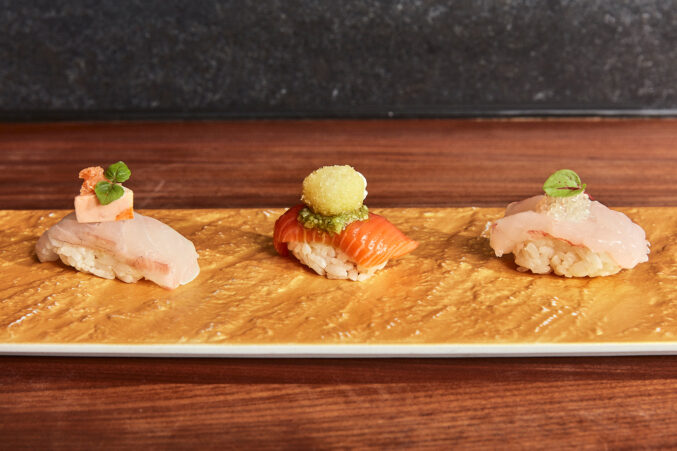Forgive me for this one. I’ve just read Jane Jacobs’ The Death and Life of Great American Cities and am preaching with the enthusiasm of the recently preached-at. But Jacobs spends a great deal of her classic urban planning book arguing against specialized districts of cities, with her prime example being “cultural” or “arts” districts. They’re great when people are visiting for a show, but otherwise, she says, they are likely to stand empty and forlorn, waiting for the next performance.
Dallas has one of those. (Two, if you count Fair Park.) But our own twist on the single-use neighborhood is what we call “restaurant parks” or “restaurant districts.” The idea, as we practice it, is to plant a bunch of brand-new restaurants next door to each other and hope that, just by serving up good food and drinks, they will create a successful neighborhood around them. The idea has repeatedly failed, and yet Dallas keeps trying. When will we learn?
First, I’ll step back from our city to explain why restaurant districts sound doomed in theory. Then we can look at actual local examples and see whether the theory holds up.
The biggest theoretical problem with a restaurant park is that it’s only used for a few hours every day. At lunchtime, hundreds of cars will pile into the parking lots, diners will rush in, and then an hour or two later they’ll all leave. Before the same process repeats at dinner, the neighborhood will experience a hangover-like lull.
This is not ideal for any area residents or neighboring retailers, who would probably appreciate more morning and afternoon activity. It’s not ideal for traffic or parking; lots will be full at some times and empty at all the other ones. And it’s not ideal for safety, because a steady stream of visitors is safer than either a huge crowd or a ghost town.
Restaurant owners have told me that being around other restaurants is a plus. If your location has nearby competition, that means hungry customers are already in the area, and they already know to visit your location for food. But a restaurant park supplies a slightly different story. People only visit the area to eat. And people can only eat at one place at a time. A strip mall that supplies a variety of meals to nearby residents and office workers, while also providing them with groceries and clothes, is different from a destination people only visit by making special effort, for only one meal. At a restaurant park, you’re on an island, and your competition is stuck on the island with you.
Finally, we should question the presumption that if we put restaurant parks in places where we want people to go, they will all go there. It sounds like lab workers putting the cheese in a new part of the maze and trusting that the mouse will get there. We simple mice would really prefer to have a piece of cheese placed right next to us, where we’re already lounging. When the piece of cheese is dropped across a river, or in a brand-new suburban complex, it feels like real estate developers are wearing white coats and taking clipboard notes on our behavior.

Case studies: restaurant parks in Dallas
You can see all of these patterns at work in Dallas restaurant parks. The most famous example is Trinity Groves, a deliberate attempt to send downtown Dallas workers across the Trinity River for their mealtimes. Trinity Groves’ developers hatched a plan that led with the food park, then would follow, years later, with high-rise apartments, retail, and townhomes. At the start, though, they had to get us to the end of the maze with a piece of cheese.
The funny thing about Trinity Groves, if you visit now, is that the broader real estate play is succeeding while the restaurant park fails. When I last visited, I counted five empty, shuttered restaurant spaces. Several of the surviving restaurants have expanded to take up their neighbors’ old spaces, meaning the attrition is even worse than it looks.
In the original Trinity Groves building, the building hailed as a “restaurant theme park” at opening, just three spots survive from the first generation of concepts: Saint Rocco’s, Cake Bar, and Kate Weiser Chocolate. The latter two are not restaurants. Saint Rocco’s, like all of the more recent additions, is a creation of Trinity Groves’ leadership team, not a partnership with outside restaurateurs.
The one new business to succeed in the park, Beto & Son, has done so well that its chef, Julian Rodarte, is now Trinity Groves’ CEO, filling other spaces with his own additional ideas. Now that the park is surrounded by high rises, it seems only a matter of time before several of the empty spaces are converted to businesses, like Cake Bar, that are more grab-and-go retail-oriented.
Another lab mouse experiment came when the Village, the middle-class apartment complex, decided to build a glamorous destination street down its center. Since this hub was built in the center of the apartment buildings, you might have expected it to focus on walkable amenities for residents: a grocery, a home-goods store, a pharmacy. It does have a small grocery and a gym, but the Village got much more ambitious: they built a luxury hotel, one of Texas’ best fine-dining restaurants, and a food hall. Then, having created destination-worthy experiences, they had to shoehorn design features for non-resident visitors, most notably a huge underground parking garage. (DART runs alongside the complex but the nearest station is a mile away on foot.)
Now one of the Village’s marquee restaurants—La Mina—is permanently closed (update: it’s been rebranded into a sort of “clubstaurant”), and the food hall across the street is, well, I don’t know what it is. When I last visited for a cookie, it looked near-abandoned. At midday, when in theory all of the Village’s work-from-home types should be visiting for a bite, this food street is desolate. I don’t know what Villagers use the street for, but Dallas at large seems to only visit for marquee restaurant Meridian. Even Meridian is experimenting with new menu formats and styles. Several sources who work or have worked at the Village’s restaurants tell me the hospitality team is experiencing high turnover in executive leadership.
I’m less familiar with the food park Richardson has constructed along U.S. Highway 75, but it has a large share of fast-casual chains (Dog Haus, The Halal Guys). Locally-owned Pakistani concept Adda closed permanently this Labor Day weekend. This location is a good example of one restaurant park pitfall: the sudden lunchtime swarm of drivers trying to commandeer parking spots. Good luck trying to exit the parking lot onto the 75 access road at 1 p.m. on a Friday.
Despite all these warnings, Dallas keeps trying to make restaurant districts happen. The latest example is the East Quarter, the new real estate marketing term for the bit of downtown that’s not quite the Farmers Market and not quite Deep Ellum. In an interview with the Dallas Morning News, developer Patrick Todd says he plans to have a dozen restaurants in just a few blocks of the East Quarter. Some are already open—Nick Badovinus’ National Anthem and Brass Ram, plus a hidden bar for office building tenants only—with more to come, including Chicago chain Etta, local Tex-Mex chain Muchacho, and an unnamed chain Todd claims serves the best sushi in the whole country. (Put me down as “skeptical.”)
To be fair, the East Quarter will also have office buildings and residences. It just wants to use restaurants as a tempting piece of cheese. Unlike Trinity Groves, where this strategy produced successful development but failed restaurants, the East Quarter is already tightly woven into Downtown Dallas, with easy public transit access and affluent neighbors. Management would do well to visit another part of downtown—the AT&T Discovery District—to see how restaurants like Ounce, Ichi Ni San, Hawthorn, and Jaxon all failed in close proximity. (Ichi Ni San moved and rebranded as Ichi, a food hall stall.)

An even odder experiment is taking place across I-345 from the East Quarter, where a series of different restaurateurs and developers have decided to build a new kind of wall between Deep Ellum and downtown. This one isn’t a highway. It’s a row of “clubstaurants”: places to eat and party, with lounges, DJs, bottle service, and overpriced food. The southern anchor of this group is The Epic, with twin newcomers La Neta (from Las Vegas) and Komodo (from Miami). A block to the north is notorious club Bottled Blonde, and across the street from that is new hookah lounge and meze spot Saaya. Just east of these lies Green Light Social; at the north end of the strip, on Ross Avenue, XOXO Dining Room will soon be joined by Vegas-based “supper club” Drai’s.
This kind of local specialization—not just a neighborhood to eat and drink, but a neighborhood meant only for certain mealtimes on certain days—is darn near unprecedented. On a Monday morning, the whole street might as well not exist.
What can we learn from successful restaurant neighborhoods?
You might be thinking: hey, what about Deep Ellum or Lowest Greenville? But those aren’t planned restaurant districts, they’re complete neighborhoods. They’re full of retail, residences, and, in Deep Ellum’s case, corporate offices. People are walking their streets at all times of day, taking advantage of a multitude of uses.
Among deliberate attempts to plant a new food destination, the most successful is investment group Exxir’s cluster of new restaurants in its corner of Bishop Arts. Exxir savvily mixed dining (Paradiso, Written by the Seasons) with bars and all-day uses (La Reunion), then brought in Village Baking Company for the early morning crowd. They used a pre-existing walkable neighborhood, rather than starting a new one, and they filled it with concepts for all three meals. Whether or not you like each business (Paradiso pops up in many “most overrated restaurant” discussions), Exxir has made the plan work.
The best example of a local “food park” is Carrollton’s Koreatown, a set of strip malls at the intersection of the President George Bush Tollway and Old Denton Road. These strip malls are home to more than 75 restaurants and karaoke bars, and when I visited on a recent Saturday night, the area was so packed with pedestrians that they’d essentially reclaimed the parking lots back from cars. My friends and I mused that Koreatown could build a parking garage around the back and convert the surface lots into patios and plazas. I also think DART or a private firm should start an express shuttle bus between the Carrollton and Dallas Koreatowns.
But notice two key differences between Carrollton Koreatown and the AT&T Discovery District. First, Koreatown is full of destination retail in addition to destination dining, with shops like Daiso, Kinokinuya, H Mart, and 99 Ranch Market. Smaller independent stores and doctor’s offices are mixed throughout, as well.
Second, Koreatown offers an experience you can’t easily get elsewhere in Dallas. It offers the visitor a unique proposition and is named after that unique trait. It offers that special experience because it developed organically over years of small business growth, not because a real estate company decided to try a lab mouse experiment.
The lesson here is that a successful restaurant neighborhood is not so different from a successful neighborhood, period. Paradoxically, the key to keeping people coming back to your “food park” is to offer something else too. Have good retail stores, a few good bars, a grocery, and a strong contingent of local residents. Mix up the neighborhood’s uses so that traffic and parking lots are equally busy at all hours. Use restaurants as an accelerant, not a catalyst, to neighborhood growth. And if your neighborhood does become dominated by restaurants, let this process happen naturally, following the cues of the residents and visitors, rather than forcing a change.
If you build a dozen restaurants on an island and hope everybody will show up, you’ll be standing in front of your food park at 1:30 p.m. on a Tuesday wondering why everybody left.
Author







